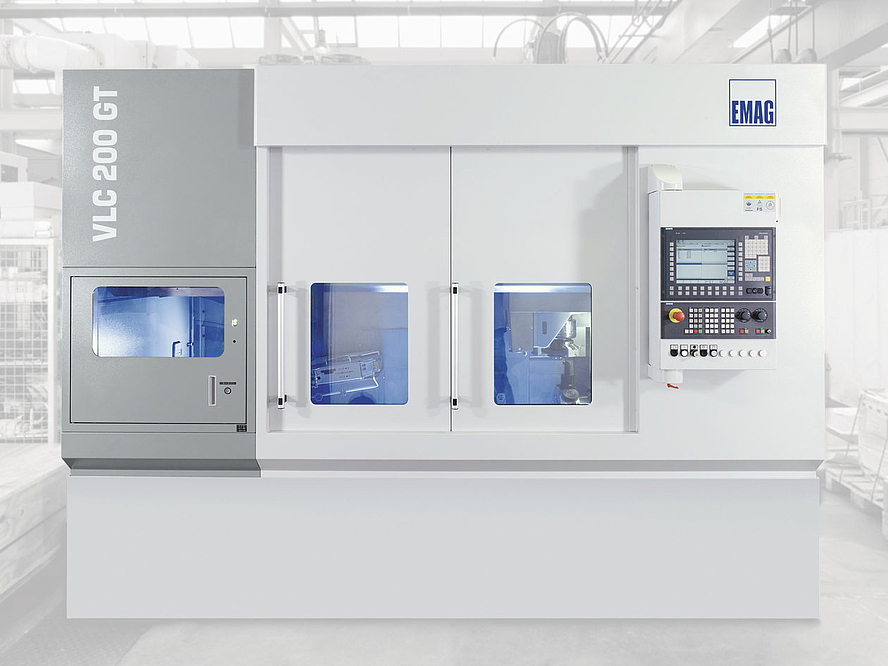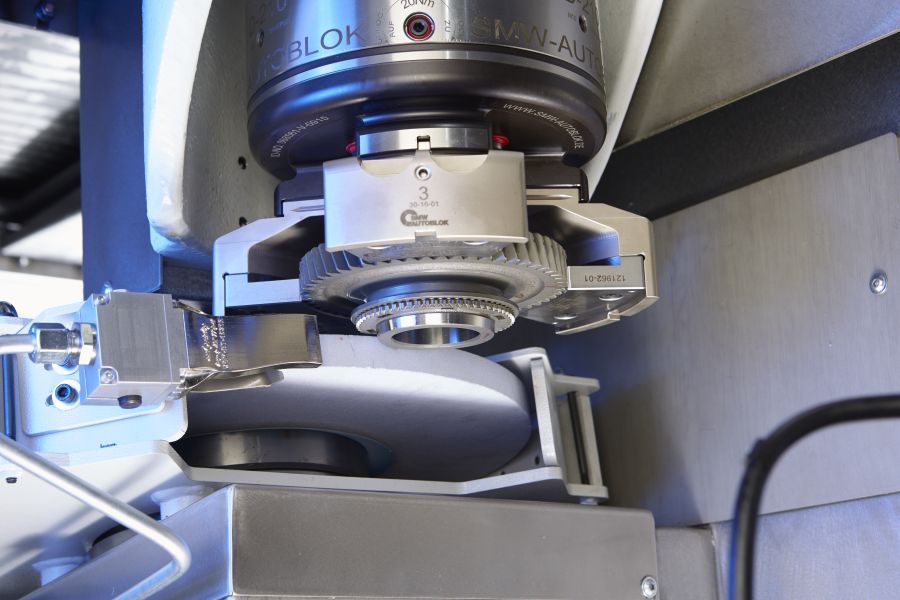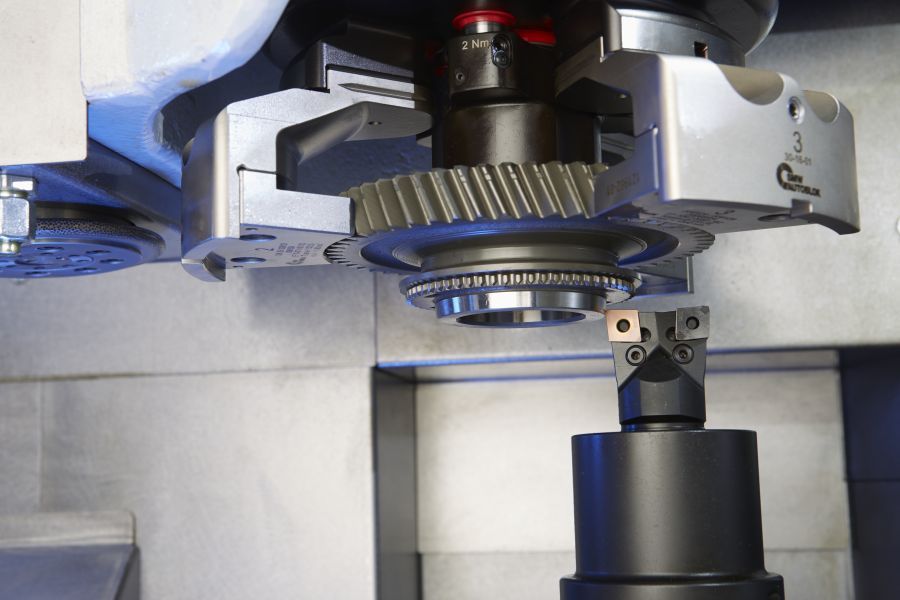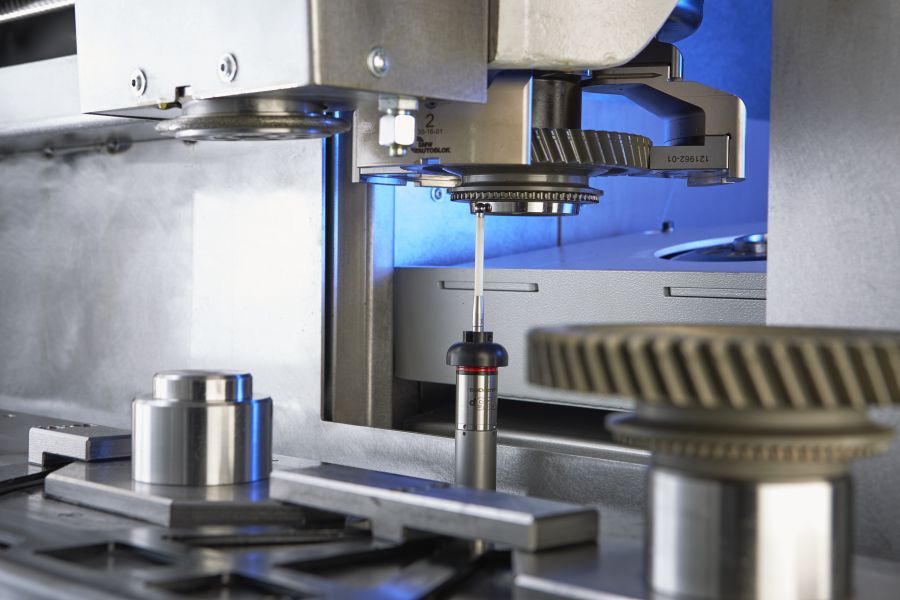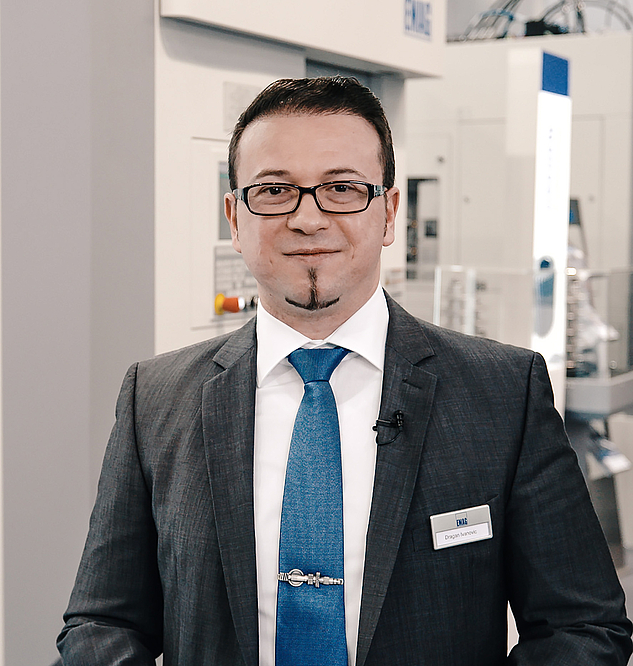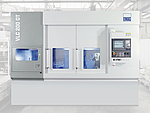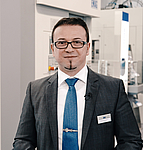09/07/2020 - EMAG GmbH & Co. KG - Press
VLC 200 GT from EMAG: Combining technologies to machine state-of-the-art transmission components
It is no secret that e-mobility is a growing market. A current study by the consulting firm Strategy Analytics, predicts the production output of “electric vehicles” will increase to 25% of the global market by 2025. It should be noted that the study uses “electric” as an umbrella term that covers all aspects of e-mobility, i.e. hybrids, fuel cell drives, and pure electric vehicles, and that the markets are highly heterogeneous. It is expected that 50% of the production will take place in China, and the other 50% will be throughout the rest of the world.
Heterogeneous markets means multiple manufacturers, even more models, and diverse drive concepts. In addition, about three quarters of vehicles will continue to have traditional combustion engines. This puts production planners and automotive industry suppliers in a difficult situation: How do you manage this product diversity and increasing production volumes?
For many years, EMAG has been providing answers to these questions with a broad range of production solutions for components used mainly in powertrain applications.
Images
EMAG’s VLC series covers a very broad rnage of machining technologies: turning, drilling, milling, gear hobbing, hard and soft machining—basically everything that is required to build comprehensive manufacturing lines. “VLC machines enable us to cover the entire process chain for the manufacturing of transmission components, from blanks to finished parts,” explains Dragan Ivanovic, team leader of Quotations & Technology at EMAG Maschinenfabrik GmbH. “Customers benefit from the unified design of our machines – consistent transfer heights and an integrated pick-up automation system that make it easy to connect machines.”
The pick-up automation system, which revolutionized the market almost 30 years ago, is the platform for the success of EMAG machines. Every machine in the VLC series features a parts storage area for raw and finished parts, as well as a working spindle that is automatically loaded and unloaded from this unit. It guarantees minimized non-productive times and high efficiency.
“Of course, these qualities are shared by the VLC 200 GT, a combined turning and grinding machine that we developed specifically for the hard machining at the end of the process chain,” Ivanovic adds.
Combining Processes to Machine Transmission Gears
The VLC 200 GT was developed primarily with a focus on transmission gears and was first launched in 2016. “Because of their large production numbers and high quality requirements, transmission gears are ideal parts to be machined on the VLC 200 GT”, Ivanovic explains. “When we analyzed the machining process, we found that we could perform the entire machining process in a single clamping operation.” To achieve this, EMAG combines the processes of hard turning and grinding. The shoulder and the bore are hard-turned first. Only a few micrometers of material is then left to be removed from the transmission gear. This ensures a much shorter grinding process using aluminum oxide or CBN grinding wheels, which saves costs in two ways: through lower tool costs resulting in a lower unit cost, and through faster cycle times. The machining quality also benefits from the combination of turning and grinding: When there is only a small amount of material remaining to be ground away after turning, the specifications for the grinding wheel can be based more precisely on the end quality required—as a result, surfaces with an average peak-to-valley height Rz of less than 1.6 micrometers can be reliably achieved with the VLC 200 GT.
Manufacturing Solution for CVT Transmission Parts
Transmission gears will continue to be among the most commonly manufactured parts in the automotive industry well beyond the year 2025. However, with the increased electrification of the power train, certain older transmission designs are having a rebirth. Dragan Ivanovic explains: “We are seeing a trend toward CVT transmissions. This is mainly due to the high efficiency of this design, whose smooth adjustment of the gear ratio without any interruption of the traction force ensures the optimal use of the supplied energy and therefore a low fuel consumption. Applied to hybrid vehicles, this means greater ranges from a single battery charge, enabling for example the fully electric operation in city traffic for an entire day.”
The continuously variable transmission results in especially comfortable driving, and is based on an intelligent design concept that does not use any toothed gears. Instead, power is transmitted via a steel belt or a lamellar chain which run around two shafts with conical disks. The quality of the components is extremely important. This is why the precision hard-machining is usually done in a multi-stage process on different turning and grinding machines. Especially in hard machining, production planners have little tolerance for error because the initial cost for hardened blanks is already high. EMAG took to the task with delight.
Production Solutions for CVT Pulley Disks
The machining area of the VLC 200 GT can be configured based on the application. Available options include internal and external spindles, block tool holders, or EMAG’s proven 12-post turret. “The machine’s flexibility allows us to use it for CVT pulley disks, in addition to transmission gears,” Ivanovic further explains.
EMAG has equipped the VLC 200 GT with an external grinding spindle in addition to the tool turret – again, a combination of hard turning and grinding. “This combination of processes allows us to optimally configure the grinding wheel for the surface of the CVT disk – all the other surfaces and bore holes can be made to the required specs by turning alone,” Ivanovic says. This results in lower tool costs and cycle times due to reduced wear on the grinding wheel, which means that it needs to be dressed less often. When it does need dressing, the VLC 200 GT features a separate diamond-coated dressing spindle. “With its separate rotating dressing system and gap control monitoring, the machine is perfectly equipped to exploit the advantages of CBN grinding,” Ivanovic emphasizes. To ensure sustained process reliability and high machining quality, the integrated measuring pin is used to check the diameter and length of the clamped component at the end of the process. Corrections are made as necessary. Operator comfort and ease of access were also important priorities for EMAG's developers: Large doors provide easy access to the machining area. Tools and clamping devices can be changed quickly and conveniently.
Contact


